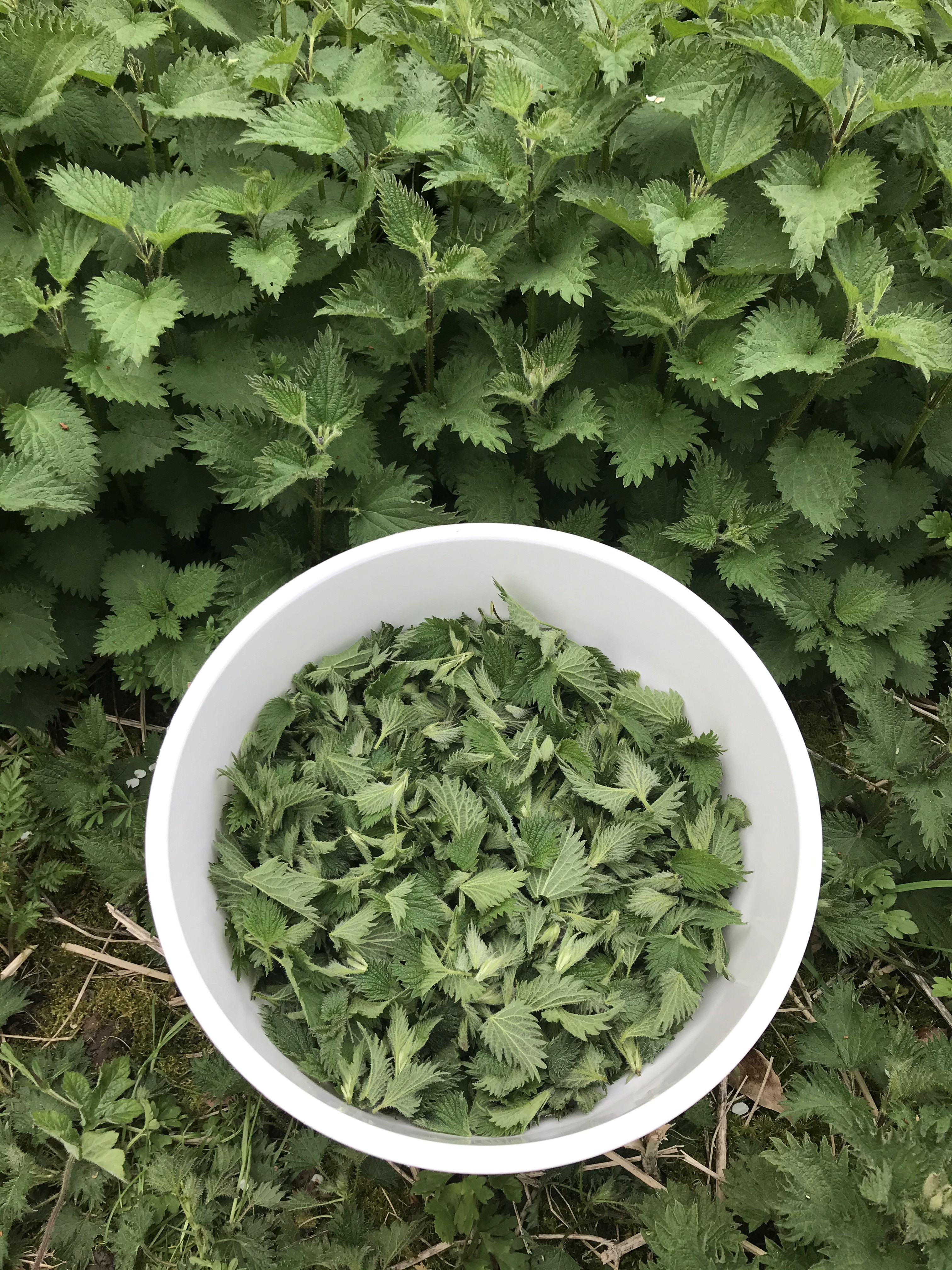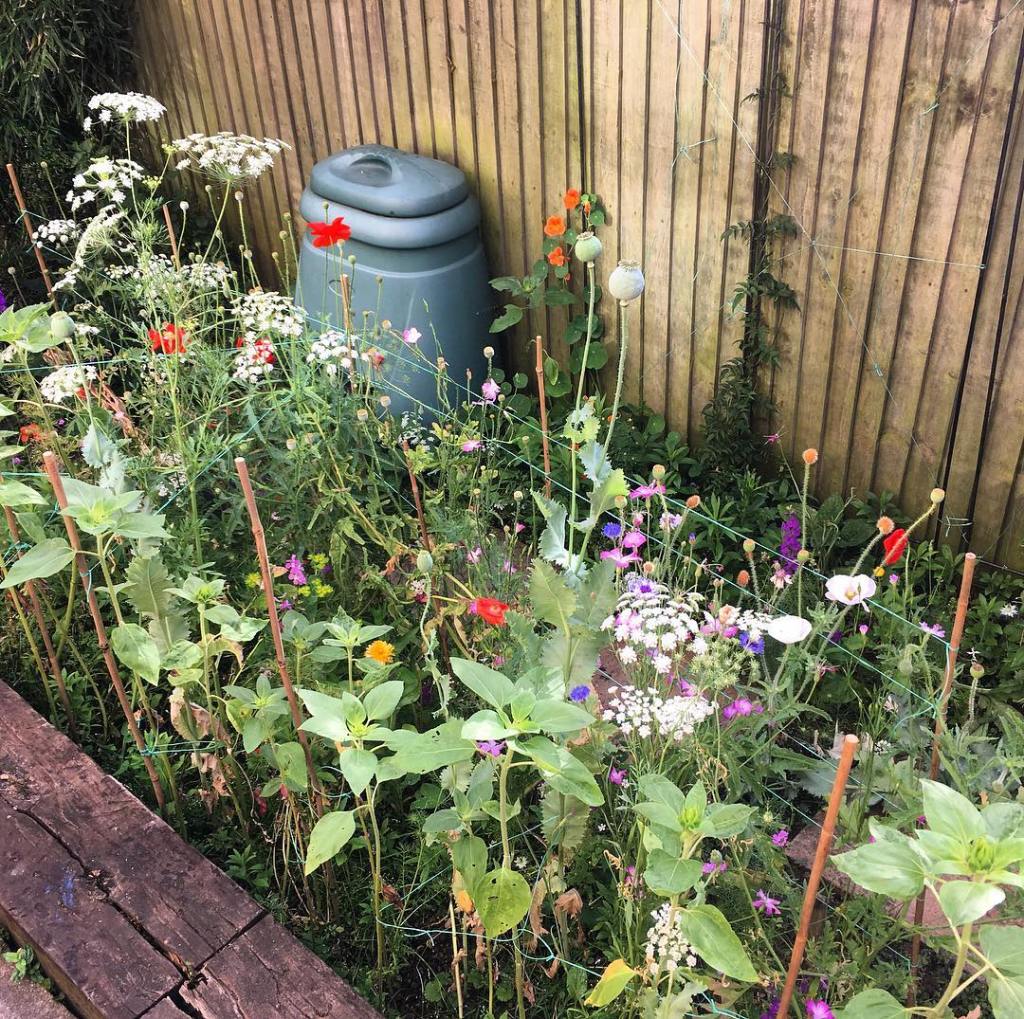Open menu

Nettles are not the enemy
Sep 30, 2024
Stinging nettles are an old enemy from childhood, and it took me many years to realise that they actually have a whole range of uses – from cooking with them to brewing up liquid plant feed. You need thick gloves and long sleeves to harvest them, and even then they always find a way to brush against an exposed patch of skin to leave an angry stinging rash. However, it’s well worth putting up with the odd sting to get yourself a bag full – just make sure they aren’t in an area where they could have had anything nasty sprayed on them if you are going to eat them. And always leave plenty for the butterflies – comma, red admiral, peacock and small tortoiseshell all lay their eggs on nettles.
Making Liquid Nettle Fertilizer
Nettles can be used to make a liquid fertiliser that is high in nitrogen and excellent food for leafy green plants by following these simple steps:
Wear thick gloves and long sleeves when harvesting nettles, and leave plenty for wildlife.
Stuff the nettles into a large container and weigh them down with something heavy.
Fill the container with water (most people recommend rainwater but I only had tap water available and it seemed to work fine).
Put a lid on to contain the horrendous smell the nettles will give off as they break down.
Leave the container for about two weeks, topping it up with water if necessary.
After two weeks, hold your nose and remove the nettles from the container. Put them on the compost heap.
Consider straining or sieving the liquid to remove any remaining bits of nettle. Dilute the liquid at 20:1 before using to feed your plants.
Cooking with Nettles
Nettles are an excellent source of all sorts of good nutrients, and are a good free replacement for spinach (cooked – you don’t want to try eating a raw stinging nettle). They are at their best in March and April.
Before cooking:
Ensure the nettles haven’t been sprayed with chemicals or other nasty substances.
Harvest the top pair of leaves on each plant for cooking.
Wash the nettles thoroughly (use tongs to handle them as they can still give a nasty sting before they are cooked!)
Don’t cook with nettles once they have begun to flower as ingesting them at this stage can harm you. They usually begin flowering in May in the UK.

Nettles are not the enemy
Sep 30, 2024
Stinging nettles are an old enemy from childhood, and it took me many years to realise that they actually have a whole range of uses – from cooking with them to brewing up liquid plant feed. You need thick gloves and long sleeves to harvest them, and even then they always find a way to brush against an exposed patch of skin to leave an angry stinging rash. However, it’s well worth putting up with the odd sting to get yourself a bag full – just make sure they aren’t in an area where they could have had anything nasty sprayed on them if you are going to eat them. And always leave plenty for the butterflies – comma, red admiral, peacock and small tortoiseshell all lay their eggs on nettles.
Making Liquid Nettle Fertilizer
Nettles can be used to make a liquid fertiliser that is high in nitrogen and excellent food for leafy green plants by following these simple steps:
Wear thick gloves and long sleeves when harvesting nettles, and leave plenty for wildlife.
Stuff the nettles into a large container and weigh them down with something heavy.
Fill the container with water (most people recommend rainwater but I only had tap water available and it seemed to work fine).
Put a lid on to contain the horrendous smell the nettles will give off as they break down.
Leave the container for about two weeks, topping it up with water if necessary.
After two weeks, hold your nose and remove the nettles from the container. Put them on the compost heap.
Consider straining or sieving the liquid to remove any remaining bits of nettle. Dilute the liquid at 20:1 before using to feed your plants.
Cooking with Nettles
Nettles are an excellent source of all sorts of good nutrients, and are a good free replacement for spinach (cooked – you don’t want to try eating a raw stinging nettle). They are at their best in March and April.
Before cooking:
Ensure the nettles haven’t been sprayed with chemicals or other nasty substances.
Harvest the top pair of leaves on each plant for cooking.
Wash the nettles thoroughly (use tongs to handle them as they can still give a nasty sting before they are cooked!)
Don’t cook with nettles once they have begun to flower as ingesting them at this stage can harm you. They usually begin flowering in May in the UK.

Nettles are not the enemy
Sep 30, 2024
Stinging nettles are an old enemy from childhood, and it took me many years to realise that they actually have a whole range of uses – from cooking with them to brewing up liquid plant feed. You need thick gloves and long sleeves to harvest them, and even then they always find a way to brush against an exposed patch of skin to leave an angry stinging rash. However, it’s well worth putting up with the odd sting to get yourself a bag full – just make sure they aren’t in an area where they could have had anything nasty sprayed on them if you are going to eat them. And always leave plenty for the butterflies – comma, red admiral, peacock and small tortoiseshell all lay their eggs on nettles.
Making Liquid Nettle Fertilizer
Nettles can be used to make a liquid fertiliser that is high in nitrogen and excellent food for leafy green plants by following these simple steps:
Wear thick gloves and long sleeves when harvesting nettles, and leave plenty for wildlife.
Stuff the nettles into a large container and weigh them down with something heavy.
Fill the container with water (most people recommend rainwater but I only had tap water available and it seemed to work fine).
Put a lid on to contain the horrendous smell the nettles will give off as they break down.
Leave the container for about two weeks, topping it up with water if necessary.
After two weeks, hold your nose and remove the nettles from the container. Put them on the compost heap.
Consider straining or sieving the liquid to remove any remaining bits of nettle. Dilute the liquid at 20:1 before using to feed your plants.
Cooking with Nettles
Nettles are an excellent source of all sorts of good nutrients, and are a good free replacement for spinach (cooked – you don’t want to try eating a raw stinging nettle). They are at their best in March and April.
Before cooking:
Ensure the nettles haven’t been sprayed with chemicals or other nasty substances.
Harvest the top pair of leaves on each plant for cooking.
Wash the nettles thoroughly (use tongs to handle them as they can still give a nasty sting before they are cooked!)
Don’t cook with nettles once they have begun to flower as ingesting them at this stage can harm you. They usually begin flowering in May in the UK.

